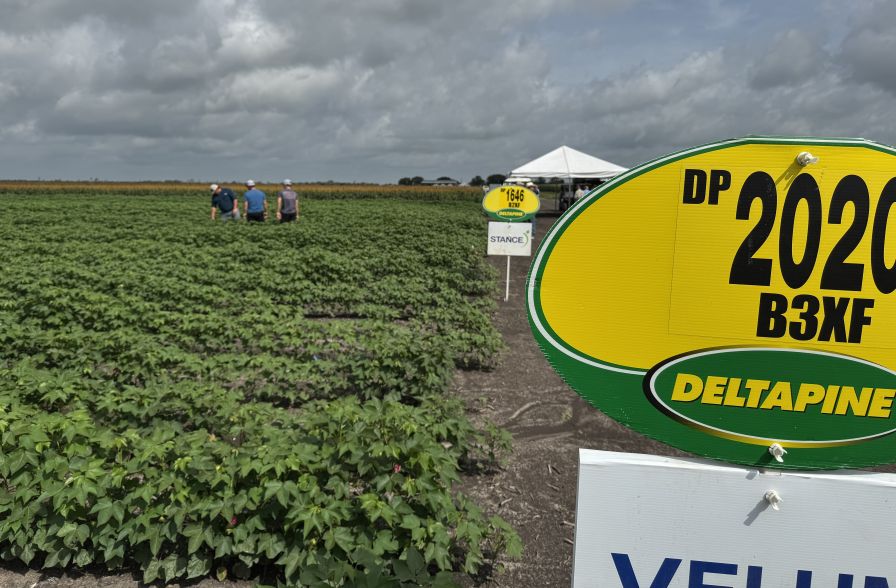Demand Issues Provide Most Impact on Cotton Prices
Cotton prices continue to stagger from the knockout blow suffered two weeks ago. Prices fell to a three-year low as the nearby July settled the week at 61.25.
As if it needs to be said, nearby demand has come to a standstill, and the few supplies mills are bidding for are being supplied by the bumper Brazilian crop with its fire sale prices. U.S. supplies are readily available, but there are no takers as noted in the weekly negative export sales report. The demand for immediate delivery is nil, and prices have slid to match the lack of demand.
As noted over the past three weeks, the worldwide demand slippage is being led by a significant slowdown in Chinese business, both domestic and export. Despite pockets of very questionable production conditions at various locations around the world, the market has not seen any news yet to question that a record world crop is in the very early stages of production. It is simply too early to discount a record crop.
Thus, prices will likely remain under pressure for at least another month until the world crop is better defined. Particular attention must be given to U.S. and Indian crop conditions during July and August. Look for the 62-68 cent trading range to hold in the December contract into mid-July. Yet, the bias is lower.
Bullish markets are comprised of strong demand and, at times, a hint of reduced production. Yet, demand is the primary driver – always. While cotton demand had been increasing, it is now showing significant signs of weakness. Coupled with global concerns of increasing production and increasing stocks, the bears have feasted on cotton for three months.
Have we reached a market bottom? Likely, the answer is no. Essentially, the entire growing season is still in front of the 2019 northern hemisphere crop. Granted, there have been some prevented plantings and other acres that have been destroyed by various storms. But it’s still June, and parts of the big dryland Texas crop will still see planters rolling until mid-July – nearly another three weeks.
Too, the problematic monsoon in India, while late, can still be said to be very much on time for the industrious cotton plant. We will have to wait until mid-August to get a better handle on crop conditions and potential crop size. In the meantime, it will be the demand issues that will provide most of the price impact on cotton prices.
Significant parts of the Southwest – Texas, Oklahoma and Kansas – have suffered major production problems. Yet, the U.S. is still expected to produce 20-22 million bales this season. Therefore, the market is not focusing on the problems of the important Texas District 1N. Neither does it find any bullish ideas in the potentially-reduced crops in Oklahoma and Kansas. Presently, the market is saying, “There is too much cotton being produced in 2019.” Further, the market is saying, “Cotton is a just another commodity and the only thing that counts is a low price.”
Now, we all take issue with such talk. Yet, that is exactly what the market is saying. The market, for all its purity, will cover the cost of production in only 7-8 years out of every ten. Fast forward to August, and we could find that the Indian monsoon is spotty and still late. Couple that with continued weather problems in the Southwest and too much rain in the Southeast or Mid-South, and then the market will begin to feel the supply demand imbalance coming into line and will respond with higher prices. Yet, for now, all the cotton market sees is bale after bale of cotton and rack after rack of yarn stacking up with no place to go.
The TKO the market suffered two weeks ago still has the market on wobbly legs and ready to fall flat on the canvas. After all, this week’s price low fell almost into the dreaded 50s – and to think just a year ago now a few growers did price some 2019 crop in the 82-83 cent range. Of course, the cotton market is a tough task manager. This year it gave the test first and is now giving its lesson.
As stated last week, a resolution to the tariff issue could give the market a minor, but only a quick, reprieve. The price issue is not related to the tariff. It’s related to consumer demand and increasing world stocks, especially in the world’s exporting countries.
Hoping to find some positive news, someone asked this week about the On-Call report. Of course, it pointed to some very bullish news the past three years. Not so now. I had hoped to just ignore it for a while. It actually points to expectations of a market as bearish as I can recall ever seeing.
We will have to fight this sloppy mid- to lower 60 cent battle some more. However, note that the price bias is lower.
Give a gift of cotton today.









